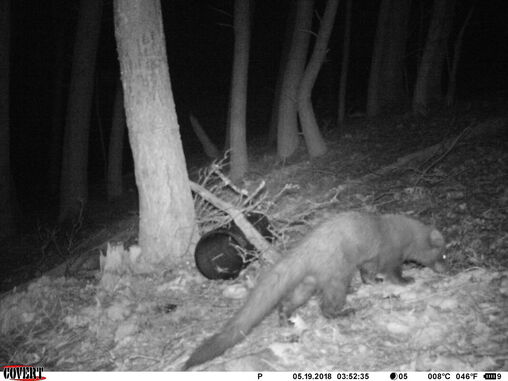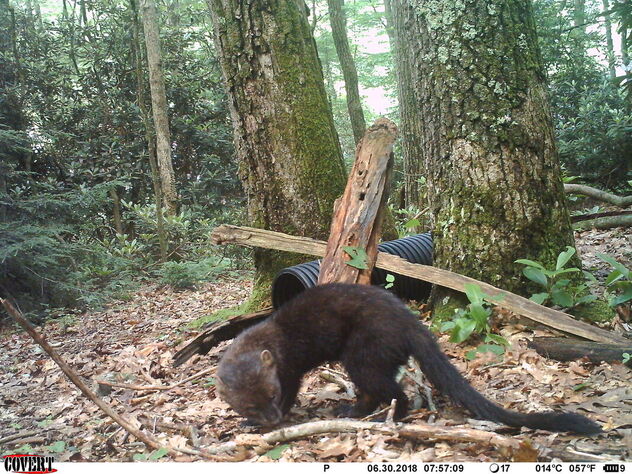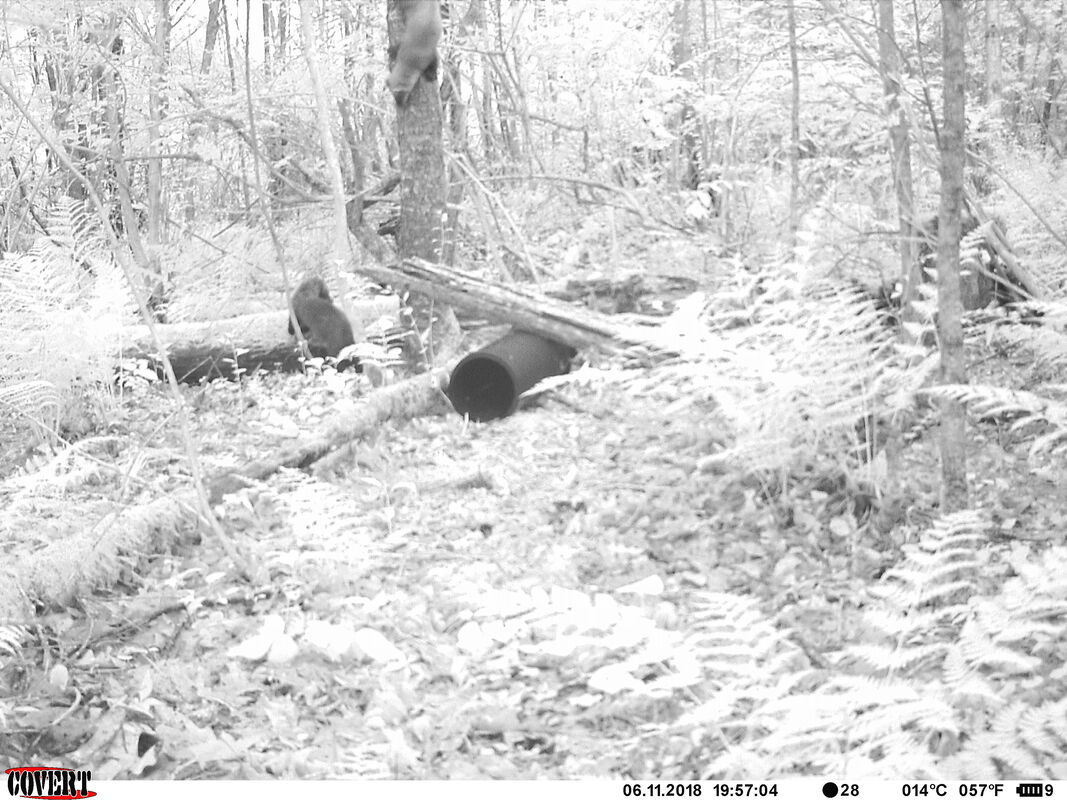Multi-species occupancy modeling and fisher habitat selection in northwestern Pennsylvania.
Fisher (Pekania pennanti) populations in Pennsylvania have exploded since their reintroduction in the 1990's. Suitable habitat for fisher varies dependent on geographic location and associations with prey species. Here on the east coast, suitable habitat can range from the traditional, deep, dark, coniferous forests to entirely deciduous stands, and anything in between. In this study, I looked at habitat variables on fisher hunting grounds, to investigate habitat use by fisher in complex forest matrices. I also investigated the co-occurrence of fisher and several other mesocarnivore species in addition to black bears (Ursus americanus) using multi-species occupancy modeling from data collected at camera traps set at hair snare stations.
This page is still under construction; more data, analyses, and photos to come! Please check back soon.
|
In the summer of 2017 I conducted a pilot season to determine the feasibility of using hair snares to determine the presence of fisher in this region, and to describe the habitat characteristics of locations where fisher were detected. I deployed 60 hair snare tubes that I then checked and re-applied scent lure over three sampling periods. These snares were set up in 20 units, with 3 snares per unit.
Using microscopy and genetic techniques, I identified 38 fisher detections from 30 sites, with only 6 samples able to be identified to the individual. I also identified there was a diminishing return on the probability of capture between the use of two and three total snares per unit, thus indicating that in following seasons no more than three snares per unit needed to be deployed. Additionally, I set remote cameras at four of the sites to monitor activity (due to limited funding, we could not set cameras at every site). Two of those sites did not return positive fisher detection from hair, however fisher were detected on camera. |
|
The following summer (2018), I re-deployed fisher hair snares at the same 60 sites. In collaboration with the Pennsylvania Game Commission, I was able to included camera traps at every site during this season. I observed higher detection rates in the 2018 season. I identified 53 fisher detections at 37 sites, with 9 samples returning individual identification, one of which was a recapture from the 2017 pilot season.
|
|
Results |
I am in the process of finalizing the results for multi-species occupancy modeling and habitat selection. Please check back later for more updates!
|


